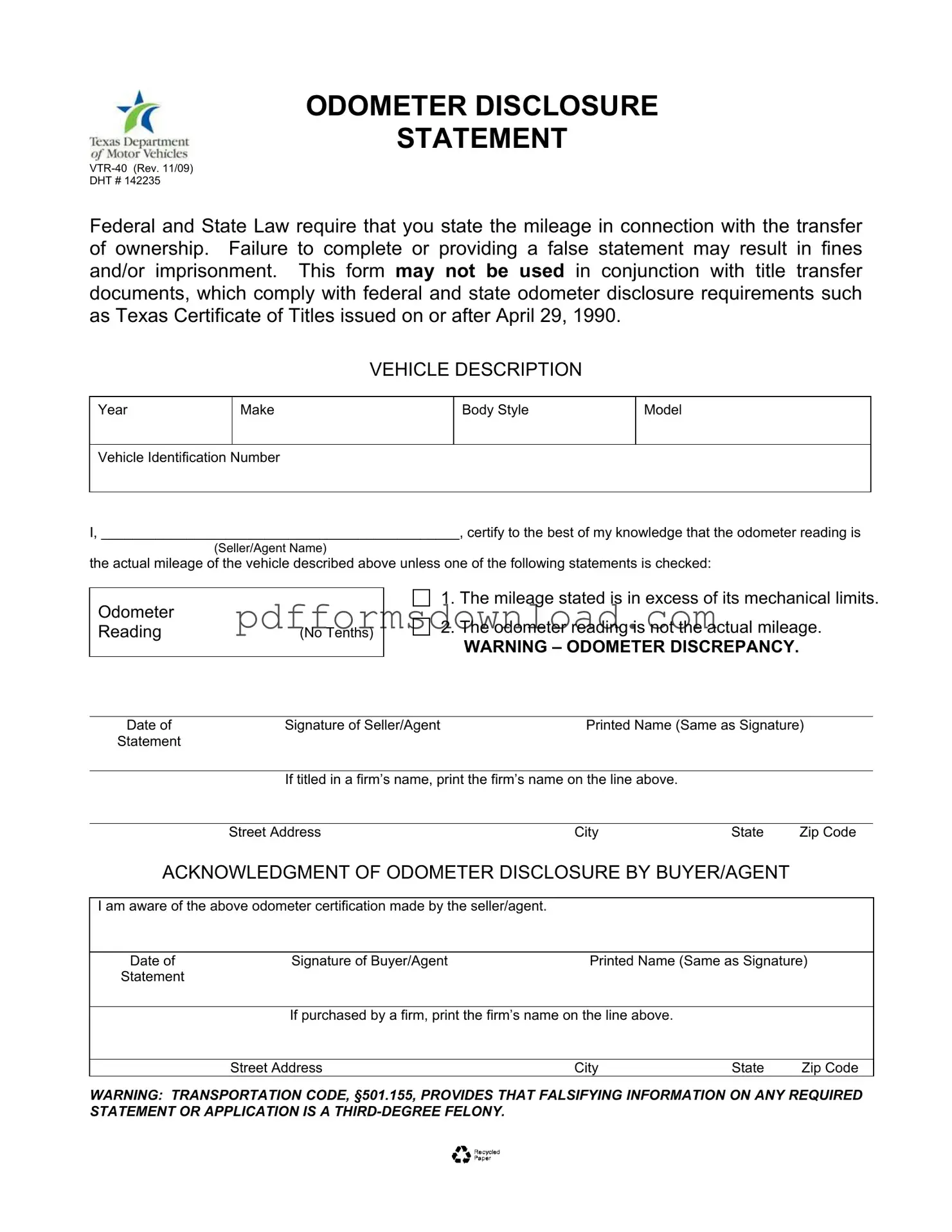What is the purpose of the Texas Odometer Statement form?
The Texas Odometer Statement form, also known as VTR-40, is used to disclose the mileage of a vehicle during the transfer of ownership. This form is required by both federal and state laws to ensure that the odometer reading is accurately reported. By completing this form, sellers confirm that the mileage stated is correct to the best of their knowledge. This helps protect buyers from potential fraud and ensures transparency in vehicle sales.
Who needs to complete the Texas Odometer Statement?
Both the seller and the buyer of a vehicle need to be involved in completing the Texas Odometer Statement. The seller must fill out the form, certifying that the odometer reading reflects the actual mileage unless specific exceptions apply. The buyer or their agent must acknowledge the odometer disclosure by signing the form. This collaborative effort helps ensure that all parties are aware of the vehicle's mileage status at the time of sale.
What happens if the Texas Odometer Statement is not completed correctly?
If the Texas Odometer Statement is not completed accurately, it can lead to serious consequences. Failing to provide the correct mileage or submitting a false statement can result in fines or even imprisonment. Additionally, the transaction may be deemed invalid, which could create complications for both the buyer and seller. It's crucial to take the time to fill out this form correctly to avoid any legal issues down the road.
Can the Texas Odometer Statement be used with title transfer documents?
No, the Texas Odometer Statement cannot be used in conjunction with title transfer documents that already comply with federal and state odometer disclosure requirements. For vehicles titled on or after April 29, 1990, the odometer information is typically included on the Texas Certificate of Title itself. It is important to understand that the Odometer Statement is a separate document intended for specific circumstances where additional disclosure is necessary.
